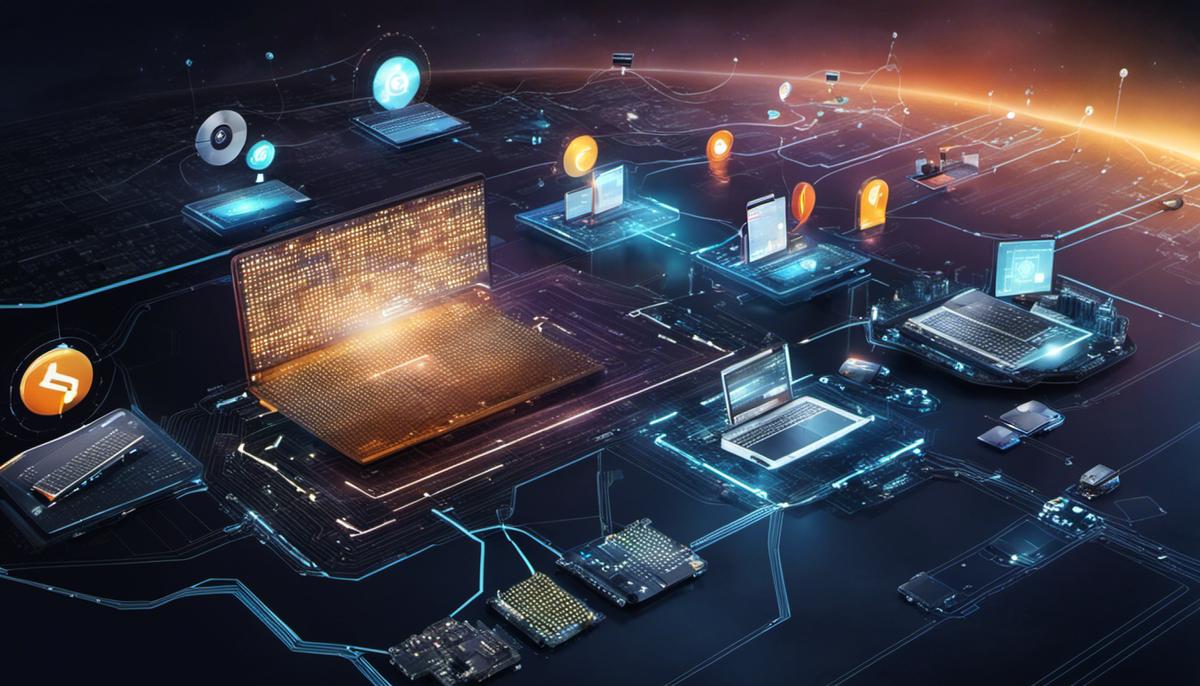An increase in the impact of cybersecurity breaches has critical and extensive ramifications. While the immediate impact, such as financial loss is grievous, the long-term aftermath, including damage to reputation, potential operational impairments, and erosion of customer trust, are equally damaging. Moreover, the complexity of these breaches demands that we delve deeper into case studies of previous high-profile instances to unearth avoidable pitfalls and critical lessons. By leveraging advanced technology, we can significantly enhance cybersecurity protocols, with predictive analytics, AI, and machine learning playing pivotal roles in threat detection and prevention. Additionally, this essay will explore the anticipated revolution of cybersecurity, driven by the advent of the Internet of Things (IoT) and quantum computing, and the fresh challenges and solutions they might present.
Understanding Cybersecurity breaches
“Exploring the True Cost and Impact of a Major Cybersecurity Breach”
In the digital age, it’s no longer a question of if but when a major cybersecurity breach will occur. This unfortunate truth has led to a remarkable upsurge in proactive measures from businesses worldwide. However, understanding the true cost and impact of such a breach is instrumental for constructing effective protective strategies.
To quantify the tangible cost of a significant cybersecurity breach, one needs to tread beyond the realm of initial direct expenses such as system repair or replacement. These immediate costs, although hefty, represent just the tip of the iceberg. Major security breaches come loaded with insidious, indirect costs that often surpass these initial figures significantly.
The most immediate fallout, you’ll find, is operational downtime. Downtime denies businesses the ability to function optimally, thereby inflicting substantial revenue loss. An often overlooked consequence of such breaches is the sudden drop in employee productivity caused by operational disruption and the forced diversion of the workforce toward mitigation or repair of damage.
Further, the recovery cost escalates quicker than we often presume due to mandatory third-party audits, legal fees, regulatory fines, and potential lawsuits. Businesses not infrequently encounter mandated compliances that inject an increased sum into the post-breach recovery costs.
Moving beyond the fiscal implications, it’s worth exploring the intangible yet considerable impacts. A damaged reputation stands on the top rung of these detrimental effects. And it can monumentally affect customer trust, brand image, and market value. A 2020 study by Comparitech estimates a drop of 7.27% in stock price at the user and shareholder level after a breach, emphasizing the stakes at play here.
Lastl

The Role of Advanced Technology in Mitigating Breaches
With a thorough understanding of how drastic the effects of a cybersecurity breach can be, it’s crystal clear that prevention should be prioritized above all else. Buckle up for a closer look at some outstanding technological solutions that are paving the way in managing and preventing cybersecurity breaches.
Artificial Intelligence (AI) and Machine Learning (ML) are being weaponized in the battle against cyber threats. Leveraging data analysis, these technologies can identify potential threats weeks or even months before they strike. For instance, ML algorithms can learn from historical data, detect patterns, and provide predictive analysis to anticipate potential breaches, enabling early action.
Beyond detection, some AI programs are now sophisticated enough to orchestrate responses, ensuring that reactions are immediate and appropriate. These machines can isolate infected systems, deploy security patches, and even decipher the attack’s source, all in a fraction of the time a human team could manage.
Blockchain technology, another game-changer, offers an added layer of security. Its decentralized nature makes it virtually impossible for hackers to corrupt. This technology is not only being used for secure transactions in the financial world but also for establishing tamper-proof communications and ensuring data integrity.
Next on the list are security Information and Event Management (SIEM) systems. By aggregating data from myriad sources, they provide a holistic view of an organization’s security posture, enabling real-time analysis of security alerts. This systemic and comprehensive view helps in detecting anomalies, potential threats, or breaches in the early stages.
Last but not least, let’s spotlight the use of biometric technology for user authentication. Fingerprints, retinal scans, and facial recognition significantly reduce the risk of unauthorized access and make it difficult for cyber criminals to breach systems. Not limited to hardware, biometric technology now extends to behavioral biometrics, studying users’ unique typing or swiping patterns to detect and prevent unauthorized access.
These technologies are shaping the future of cybersecurity. As they emerge and mature, they’re capitalizing on the ability to learn and adapt, empowering enterprises with anticipatory defenses and robust response mechanisms.
Preventing a cybersecurity breach is undeniably a challenging task. Still, with the right arsenal – one that embraces advanced technology, it’s more than possible to stay a step ahead of the cybercriminals. Remember, in cybersecurity, the best defense is a formidable and cutting-edge offense. And right now, there’s nothing quite as advanced as these emerging tech solutions.

The Future of Cybersecurity
Amid the surge of sophisticated threats and cybercriminals becoming more adept at evasion tactics, leveraging advanced technology for cybersecurity is increasingly becoming the new normal. As the cyber threat landscape continues to evolve, strategies and measures for cybersecurity are rapidly shifting gears to stay one step ahead. Spearheading this transformation are groundbreaking technologies such as Artificial Intelligence (AI), Machine Learning (ML), Blockchain, Security Information and Event Management (SIEM) systems, and Biometric technology.
AI and ML are providing unprecedented breakthroughs in the field. AI, coupled with ML, is designing security systems capable of predicting and identifying potential threats in real time. This early detection dramatically enhances the timely execution of mitigation strategies.
A game-changer in cybersecurity is the integration of AI with autonomous response technology. It creates an orchestration of responses to threats, thereby reducing the need for manual input. It’s a classic instance of tech automation bolstering cybersecurity efforts, where the AI-powered system not only detects the issue but also takes predetermined protective actions.
Blockchain technology, popularly associated with cryptocurrency, is making headway into cybersecurity. This distributed ledger technology offers three key benefits: secure transactions, tamper-proof communications, and data integrity. By creating an immutable record of operations and actions it discourages potential intruders due to the vast computational power required to alter or erase the blocks of data.
Impacting the dynamic field of cybersecurity are SIEM systems aimed at providing real-time analysis of security alerts generated by applications and network hardware. By aggregating log data produced by servers, devices, and network infrastructure, SIEM systems provide an expansive view of the organization’s IT environment for efficient threat detection and management.
A significant part of future cybersecurity adaptability is Biometric technology. Actualizing several forms of user authentication, including fingerprints, retinal scans, and facial recognition, they offer an extra layer of security. Beyond physical trait-based identification, the industry is also transitioning towards behavioral biometrics, which scrutinizes patterns relative to device usage for detecting and preventing unauthorized access.
As our world becomes increasingly digitized, the role of emerging tech in cybersecurity will become even more critical. It’s about time we accepted, understood, and implemented these evolving tech trends. They are rapidly reshaping cybersecurity’s future, enabling a forward-thinking approach to beat cybercriminals at their own game. Only by mastering the latest technologies can we expect to maintain a secure and resilient cyberspace.

As we journey into the future, cybersecurity threats continue to evolve, bearing the potential to be more devastating than ever before. Just as these challenges escalate, so do the solutions we create, with innovations such as IoT and quantum computing poised to redefine the cybersecurity landscape. These advancements may offer promising protective solutions, but they also introduce new vulnerabilities. Therefore, proactivity, innovation, and adaptability will be key in future-proofing against these potential breaches. Highlighting the financial, reputational, operational, and customer trust impact experienced from past breaches affirms the need for robust cybersecurity measures. We witness that the fusion of advanced technology with cybersecurity is not merely a possibility but a necessity. The race against cyber threats is anything but over; it is a war that requires constant vigilance and a relentless pursuit of security excellence.

